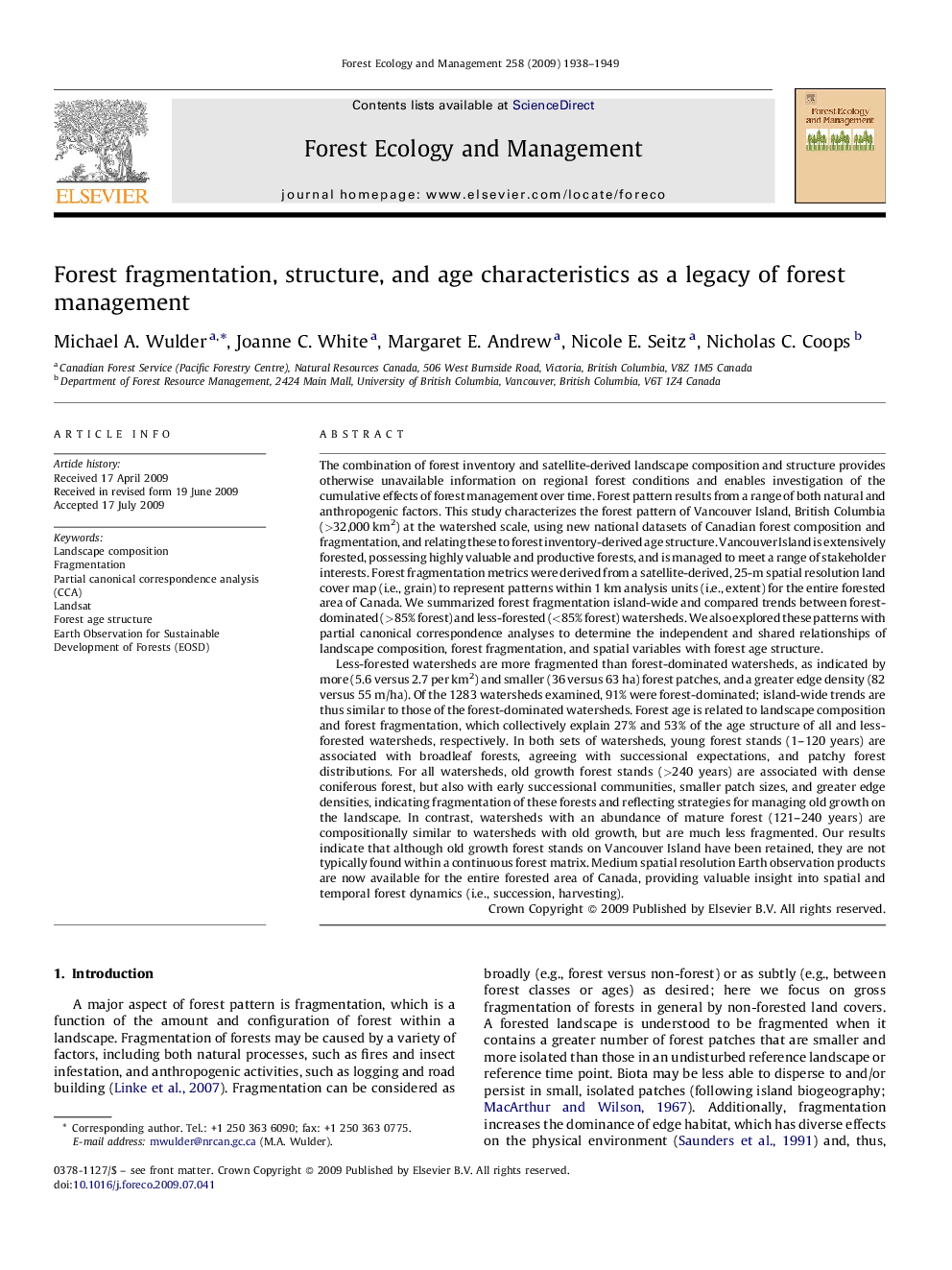| کد مقاله | کد نشریه | سال انتشار | مقاله انگلیسی | نسخه تمام متن |
|---|---|---|---|---|
| 88554 | 159308 | 2009 | 12 صفحه PDF | دانلود رایگان |

The combination of forest inventory and satellite-derived landscape composition and structure provides otherwise unavailable information on regional forest conditions and enables investigation of the cumulative effects of forest management over time. Forest pattern results from a range of both natural and anthropogenic factors. This study characterizes the forest pattern of Vancouver Island, British Columbia (>32,000 km2) at the watershed scale, using new national datasets of Canadian forest composition and fragmentation, and relating these to forest inventory-derived age structure. Vancouver Island is extensively forested, possessing highly valuable and productive forests, and is managed to meet a range of stakeholder interests. Forest fragmentation metrics were derived from a satellite-derived, 25-m spatial resolution land cover map (i.e., grain) to represent patterns within 1 km analysis units (i.e., extent) for the entire forested area of Canada. We summarized forest fragmentation island-wide and compared trends between forest-dominated (>85% forest) and less-forested (<85% forest) watersheds. We also explored these patterns with partial canonical correspondence analyses to determine the independent and shared relationships of landscape composition, forest fragmentation, and spatial variables with forest age structure.Less-forested watersheds are more fragmented than forest-dominated watersheds, as indicated by more (5.6 versus 2.7 per km2) and smaller (36 versus 63 ha) forest patches, and a greater edge density (82 versus 55 m/ha). Of the 1283 watersheds examined, 91% were forest-dominated; island-wide trends are thus similar to those of the forest-dominated watersheds. Forest age is related to landscape composition and forest fragmentation, which collectively explain 27% and 53% of the age structure of all and less-forested watersheds, respectively. In both sets of watersheds, young forest stands (1–120 years) are associated with broadleaf forests, agreeing with successional expectations, and patchy forest distributions. For all watersheds, old growth forest stands (>240 years) are associated with dense coniferous forest, but also with early successional communities, smaller patch sizes, and greater edge densities, indicating fragmentation of these forests and reflecting strategies for managing old growth on the landscape. In contrast, watersheds with an abundance of mature forest (121–240 years) are compositionally similar to watersheds with old growth, but are much less fragmented. Our results indicate that although old growth forest stands on Vancouver Island have been retained, they are not typically found within a continuous forest matrix. Medium spatial resolution Earth observation products are now available for the entire forested area of Canada, providing valuable insight into spatial and temporal forest dynamics (i.e., succession, harvesting).
Journal: Forest Ecology and Management - Volume 258, Issue 9, 10 October 2009, Pages 1938–1949